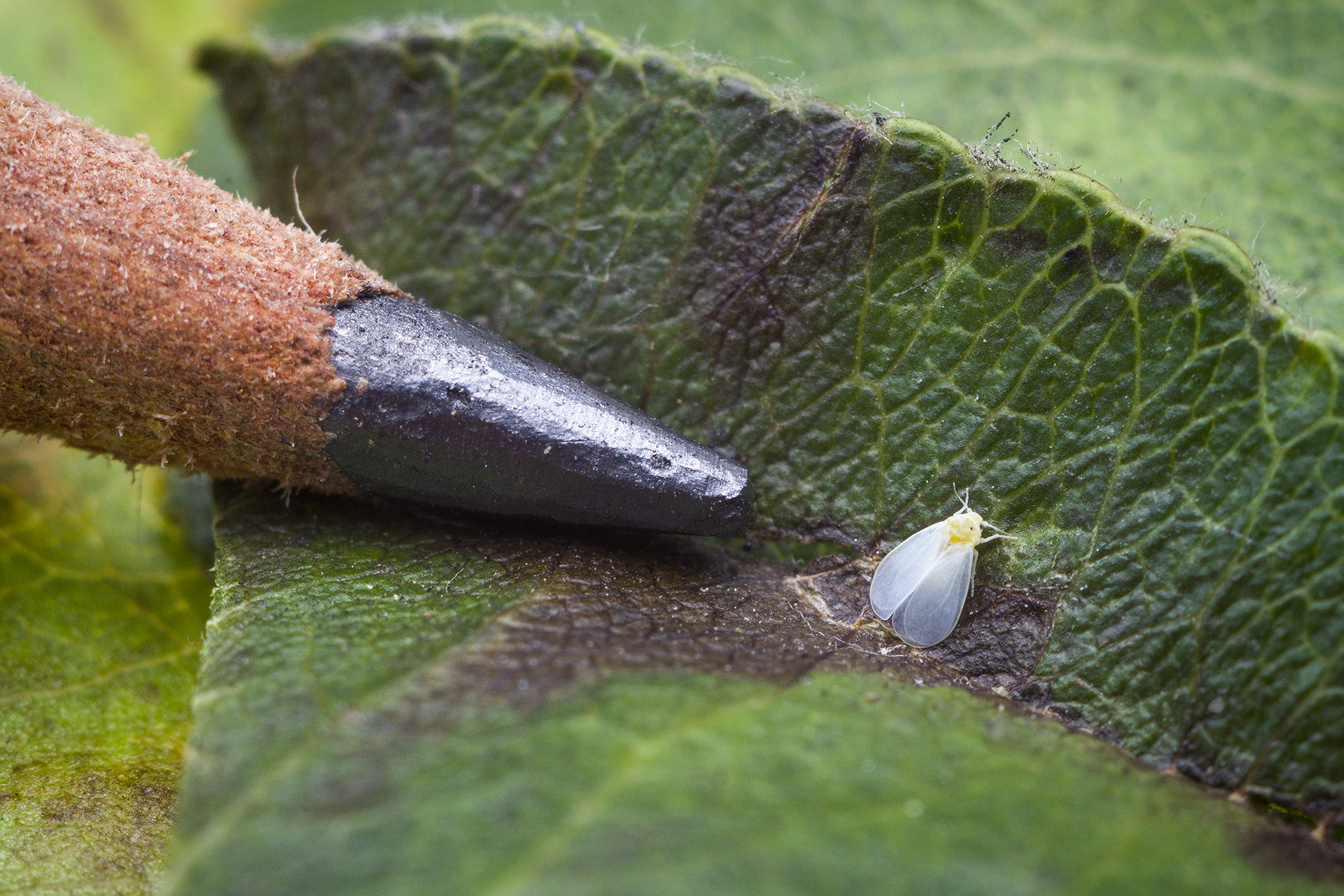The ash whitefly that threatened plants and annoyed residents up and down the Willamette Valley last year has returned in force.
This time, though, there’s a difference. Two natural enemies of the whitefly have been spotted in the Portland area, according to Robin Rosetta, an entomologist with Oregon State University Extension Service. She predicts that the parasitic wasps and lady beetles will reduce the ash whitefly population significantly in the next one to two years and eventually get the population to a point that it will not pose a problem.
In the meantime, Rosetta strongly urges homeowners not to use pesticides in an attempt to control the invasive whitefly (Siphoninus phillyeae) because spraying will kill its foes as well.
“Stop the trigger finger on these whiteflies,” she said. “I know they can be irritating because they show up in large swarms, but it will be short lived. The whiteflies you see right now are not damaging most plants. A sprayed area will likely be re-invaded quickly from unsprayed areas nearby. And we want to save the newly found natural enemies.”
Those insects — a tiny wasp and a lady beetle — were detected by the Oregon Department of Agriculture in areas of the northern Willamette Valley.
The immature wasp (Encarsia inaron) kills the whitefly by feeding and growing inside the insect’s body, then breaking through as a winged adult to kill the host. The lady beetle (Clitostethus arcuatus) is more direct. It just eats it whole.
Ash whitefly was first found in small numbers in 2014 and became noticeable last year as they flew around in large numbers. Though other whiteflies are common in Oregon, including the ubiquitous greenhouse species, the juvenile ash whitefly is distinctive. The tiny eggs, which are laid on the underside of leaves, are pale yellow and hatch into nymphs that are almost translucent at first and then more opaque as they become covered in tufts of white wax, according to Rosetta. They develop into brown, oval-shaped young insects called pupae from which adults emerge. Both nymphs and adults cause injury to the plant by sucking out its sap.
So far, the ash whitefly hasn’t done much damage in Oregon, according to Rosetta, though it can cause curled or stunted leaves and, in some cases, defoliation and death. The insect has a long list of plants it prefers. In Oregon, there is evidence that the whitefly has been reproducing on Oregon ash, ornamental pear, hawthorn and flowering quince.
Plants such as boxwood, barberry, cistus, rhododendrons, azaleas and especially pyracantha appear to attract the insect, but it doesn’t seem to be reproducing on these plants. In the fall, the whiteflies move from the deciduous plants they prefer in summer to evergreens where they can eat and reproduce over winter.
In addition to the large number of whiteflies flying around in swarms, people may notice they secrete a substance similar to the honeydew produced by aphids.
“It’s a sticky goo that can rain down on sidewalks and cars and be a real annoyance for people,” Rosetta said. “That usually is what pushes people to ask about pesticides.”
For more information, refer to OSU’s Pacific Northwest Nursery IPM website and a press release from the ODA.

